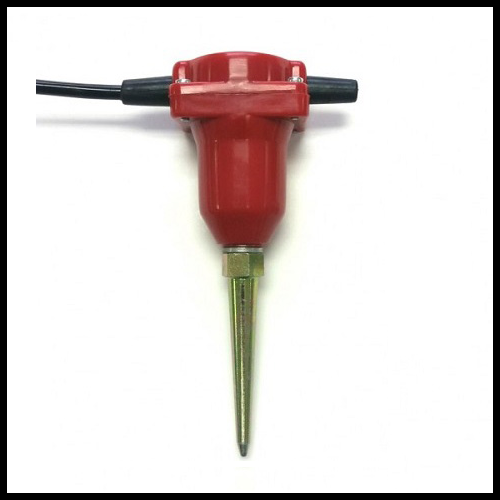Spread Cables
Spread cables connect geophones to the seismograph, which records the seismic activity. They come in various channel quantities, lengths, spacings, and connection types. Before renting spread cables, it is important to determine what the operator needs:
Channel Quantity: Most spread cables possess 12 or 24 channels. Often two 12 channel spread cables are used with a “Y-Cable” that places the exploration seismograph at the center. Other times, one 24 channel spread cable is used. Some spread cables can be connected directly together, which may allow more than 24 channels to be tethered together. This is often the case when a roll box is used.
Length/Spacing: Spread cables come in a variety of different spacings; 5, 10, and 20ft spacings are the most common. It is important to determine the proper spacing to achieve the level of detail and reach the depth of investigation needed. In some cases, it is important to know how long the lead (the spacing between the first geophone and seismograph) is to determine how long a trigger wire one needs. Finally, it is important to remember that spacings can always be taken-in to shorten the distance between a geophone, but it is impossible to lengthen a cable.
Connection Types: The operator needs to confirm that he or she is able to connect to the seismograph. Not all seismographs use the same connector. Therefore, identify whether one can directly connect the spread cable/s to a seismograph or if an adapter cable is needed.
Likewise, spread cables have different connections that link the geophone to the spread cable. The most common types are Mueller clips, Spring clips, and Kooter connectors. It is important that the geophone and spread cable connectors match. Kooter clips may come in various sizes so those need to match as well. Some Kooter slips are water resistant.
Geophones
Geophones possess an accelerometer, which when vibrated creates a voltage in proportion to the strength of the movement. This voltage is then recorded by a seismograph via the spread cable. Most geophones used for engineering purposes measure energy along the vertical axis, but there are horizontal and triaxial geophones (i.e. borehole geophones, vibration monitors) as well.
Different frequency geophones are used for different purposes. 4.5 Hz geophones are very common for engineering surveys. However, if the area of investigation is less than 40ft, it wouldn’t be unreasonable to use geophones in the 30 to 40 Hz range. Similarly, very deep surveys may be served well by lower frequency geophones such as 2 Hz.
Most geophones use a spike to couple to the ground. Sometimes it is useful to bring a drill if the spike cannot be pushed into the hard ground. Other times, spikes cannot be used and the geophones couple to the ground via a heavy plate.
There are some specialty geophones such as borehole geophones. These geophones are usually not used in conjunction with other geophones in an array, instead one or two borehole geophones are used in downhole or crosshole surveys.
Land Streamer
A land streamer is an array of geophones on plates and a seismic cable affixed to a strap at fixed intervals. The most common land streamer configuration possesses twenty-four 4.5 Hz geophones at five foot spacings. Other spacings and geophone frequencies cater to surveys with different parameters. Land streamers can be useful because the whole setup can be towed and therefore moved as a unit to cover a large distance on a line. This can be useful for long lines, but a truck, tracotr, or UTV may be needed.
Roll Box
Roll boxes allow the user to connect several spread cables and geophone arrays to an exploration seismograph to “roll” through a line without actually moving equipment. For instance, a roll box may allow a 24 channel seismograph to connect to 96 geophones in a line. A switch on the roll box would select a group of 24consecutivee geophones to record as a group. Therefore, the operator could roll through the line via a switch on the roll box without moving the setup after all 96 geophones are setup. This may be preferred to multiple seismographs tethered together as it would be cheaper to rent and use less resources such as deep cell batteries. It also might be preferred to a land streamer as spiked geophones can be used, which often couple to the ground better than plates.
